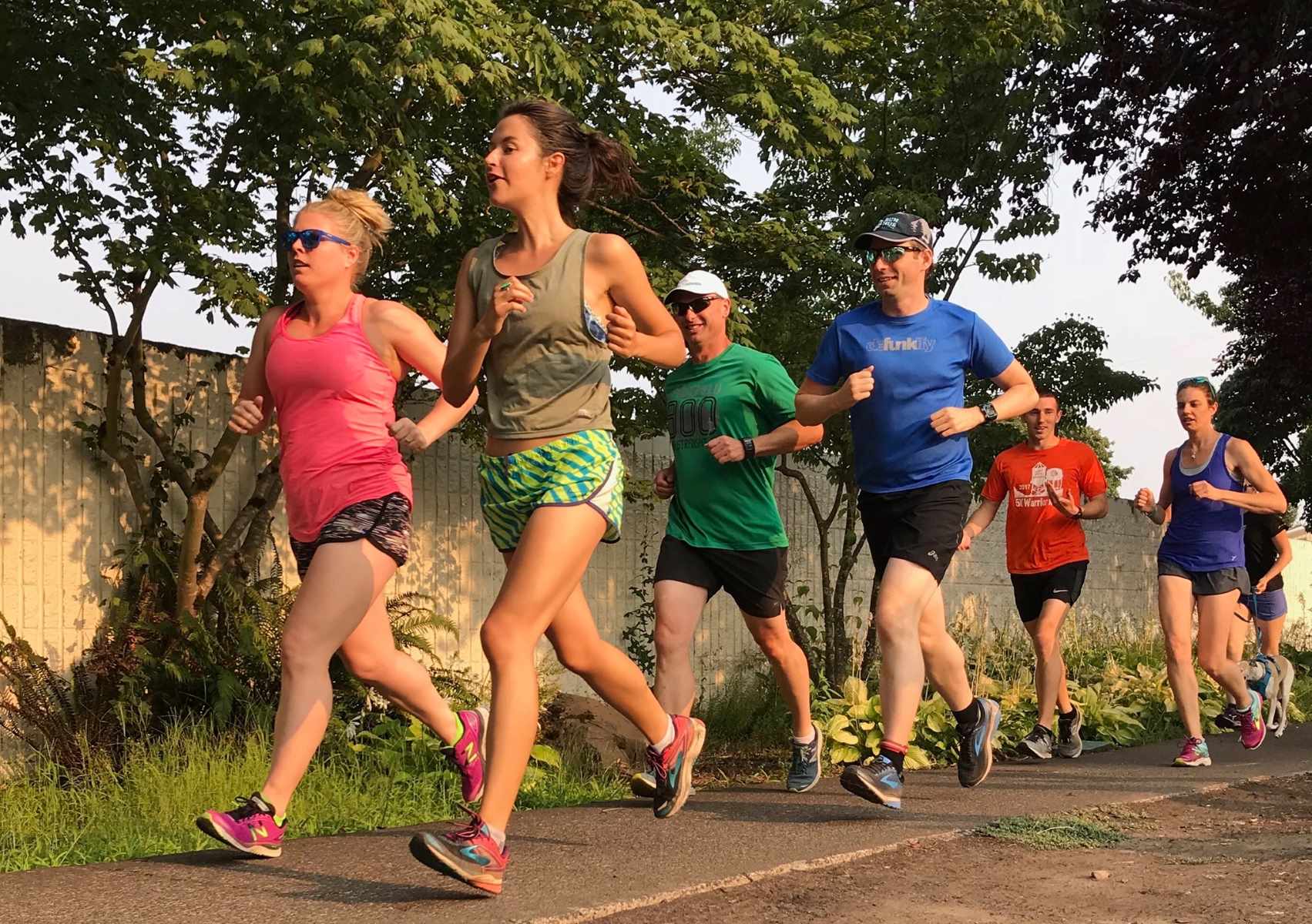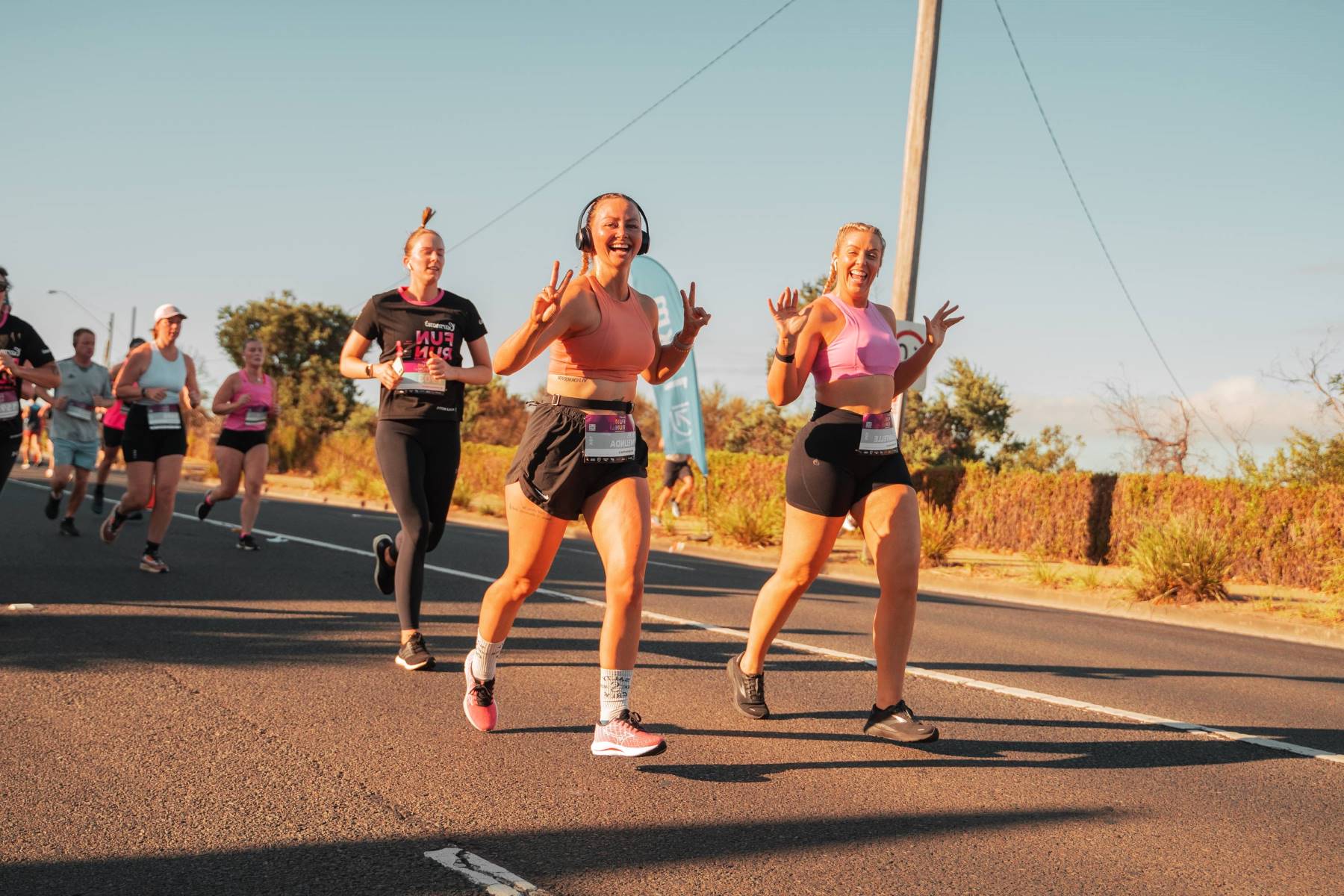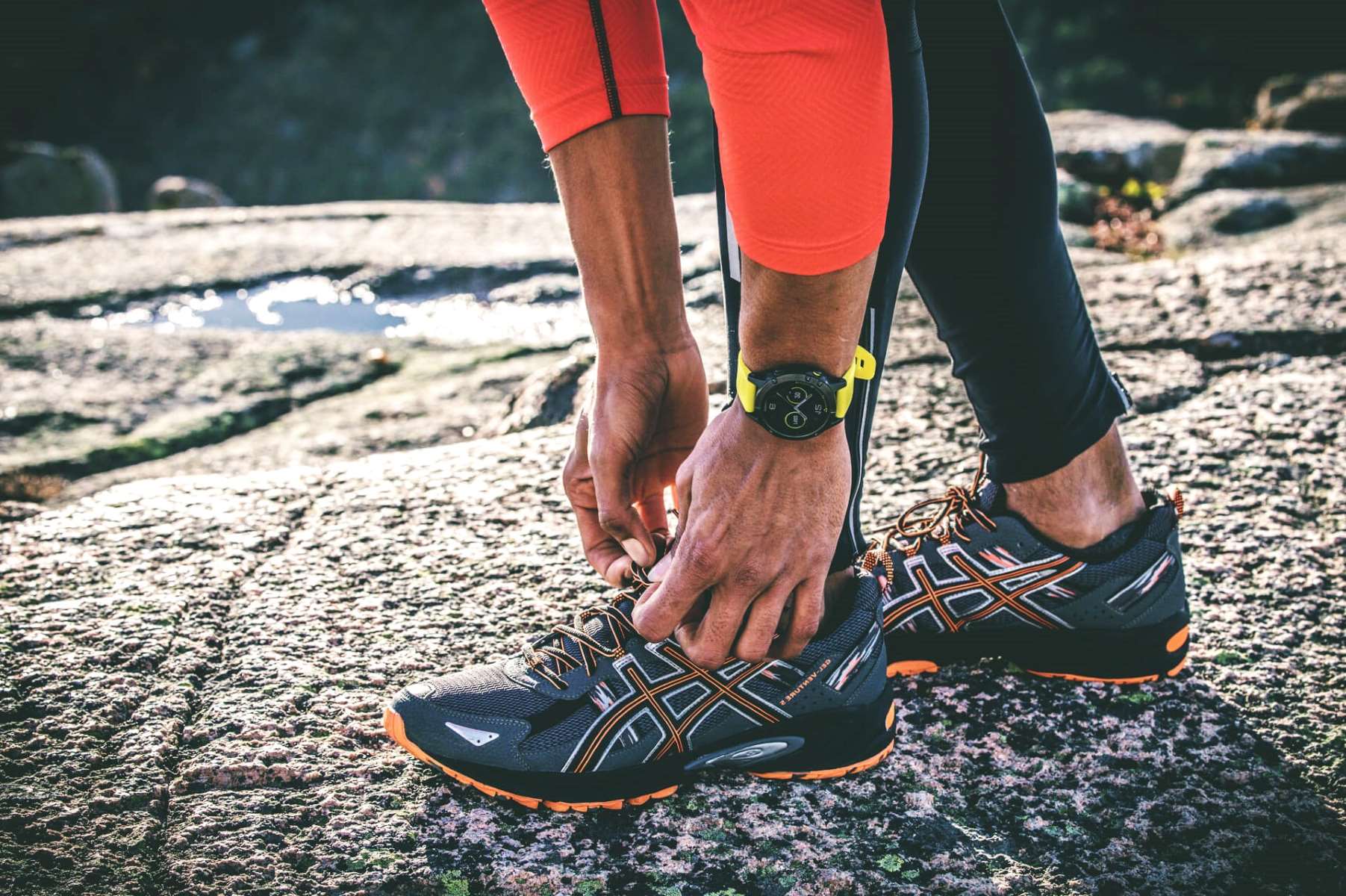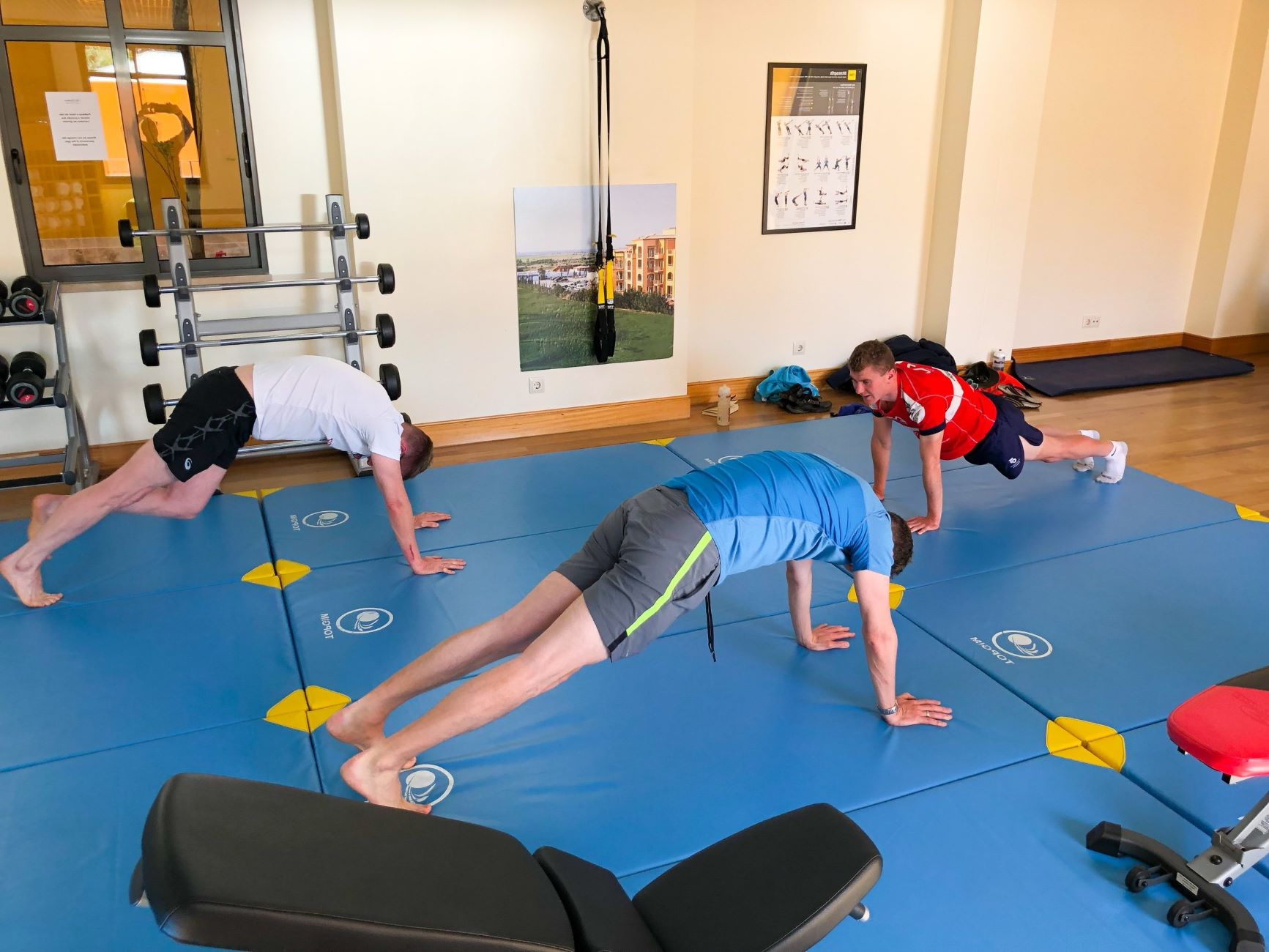Home>Gear & Reviews>Tech & Apps>Don’t Overlook These 4 Essential Running-Watch Metrics


Tech & Apps
Don’t Overlook These 4 Essential Running-Watch Metrics
Published: February 29, 2024
Discover the 4 essential running-watch metrics you shouldn't overlook. Learn how tech and apps can help you track your progress effectively.
(Many of the links in this article redirect to a specific reviewed product. Your purchase of these products through affiliate links helps to generate commission for Therunningadvisor.com, at no extra cost. Learn more)
Table of Contents
Understanding Your Heart Rate
Your heart rate is a fundamental metric that provides valuable insights into your overall health and fitness levels. When it comes to running, understanding your heart rate can significantly impact your training and performance. By monitoring your heart rate during runs, you can optimize your workouts, prevent overexertion, and enhance your endurance.
Importance of Heart Rate Monitoring
Monitoring your heart rate while running allows you to gauge the intensity of your workout. By staying within specific heart rate zones, you can tailor your training to achieve different objectives, such as improving aerobic capacity, increasing endurance, or burning fat. This personalized approach to training ensures that you are working at the right intensity for your fitness goals, leading to more effective and efficient workouts.
Heart Rate Zones
Understanding the different heart rate zones is crucial for maximizing the benefits of your training. These zones are typically categorized as follows:
-
Zone 1 (50-60% of Max Heart Rate): This zone is ideal for warm-ups, cool-downs, and recovery runs. It helps improve overall cardiovascular health and aids in active recovery.
-
Zone 2 (60-70% of Max Heart Rate): Training in this zone enhances aerobic capacity and fat metabolism, making it beneficial for long, steady runs.
-
Zone 3 (70-80% of Max Heart Rate): Running in this zone improves anaerobic threshold and boosts endurance, making it suitable for tempo runs and race simulations.
-
Zone 4 (80-90% of Max Heart Rate): This zone focuses on increasing maximum performance capacity and is commonly used for interval training and high-intensity workouts.
-
Zone 5 (90-100% of Max Heart Rate): Working out in this zone improves speed and power, making it ideal for sprinting and short, intense efforts.
Utilizing Heart Rate Data
By consistently monitoring your heart rate during runs, you can gain valuable insights into your fitness progress and performance. Tracking your heart rate over time allows you to identify trends, measure improvements, and adjust your training regimen accordingly. Additionally, understanding how external factors such as weather, stress, and hydration impact your heart rate can help you make informed decisions about your workouts.
Choosing the Right Running Watch
To effectively monitor your heart rate while running, it's essential to invest in a reliable running watch equipped with accurate heart rate monitoring technology. Look for a watch that offers real-time heart rate data, customizable heart rate zones, and the ability to sync with training apps for comprehensive analysis.
Incorporating heart rate monitoring into your running routine empowers you to train smarter, optimize your workouts, and achieve your fitness goals more effectively. By understanding and leveraging your heart rate data, you can elevate your running performance and overall well-being.
Monitoring Your Cadence
Monitoring your cadence while running is a crucial aspect of optimizing your performance and reducing the risk of injury. Cadence refers to the number of steps you take per minute, and it plays a significant role in your running efficiency and overall biomechanics. By paying attention to your cadence and making necessary adjustments, you can enhance your running technique and achieve better results.
Understanding Cadence
Cadence is often measured in steps per minute (SPM) and is a key indicator of running efficiency. A higher cadence typically indicates a shorter stride length and quicker turnover, which can contribute to reduced ground contact time and lower impact forces on the body. Research suggests that maintaining an optimal cadence can help improve running economy and reduce the likelihood of overstriding, which is associated with increased injury risk.
Benefits of Monitoring Cadence
By actively monitoring your cadence, you can gain valuable insights into your running technique and make adjustments to optimize your performance. A consistent and appropriate cadence can lead to more efficient running, reduced stress on the body, and improved overall running form. Additionally, maintaining an optimal cadence can help prevent common running-related injuries, such as shin splints, IT band syndrome, and stress fractures.
Ideal Cadence Range
While individual preferences and biomechanics vary, a cadence of around 170-180 steps per minute is often considered optimal for most runners. This range is associated with a balance between stride length and turnover rate, promoting efficient running mechanics and minimizing the risk of overstriding. However, it's important to note that ideal cadence can differ based on factors such as running speed, terrain, and individual biomechanics.
Utilizing Cadence Data
Modern running watches equipped with advanced sensors and technology can provide real-time cadence data, allowing you to monitor and analyze your running technique. By leveraging this data, you can make informed adjustments to your cadence, stride length, and overall running form. Additionally, tracking your cadence over time can help you identify trends, assess the impact of training interventions, and refine your running mechanics for optimal performance.
Improving Cadence
If you find that your cadence is below the recommended range, there are several strategies to improve it. Focusing on quick, light foot strikes and maintaining a slight forward lean can help increase cadence while reducing the risk of overstriding. Incorporating cadence-specific drills and exercises into your training regimen can also contribute to enhancing your running efficiency and technique.
Embracing Cadence as a Performance Tool
By embracing cadence monitoring as a valuable performance tool, you can refine your running mechanics, reduce the risk of injury, and enhance your overall running experience. Consistently monitoring and optimizing your cadence can lead to improved running economy, increased efficiency, and a more enjoyable and sustainable running journey.
Incorporating cadence monitoring into your training routine empowers you to make data-driven adjustments, refine your running technique, and achieve your performance goals with greater precision. As you continue to monitor and optimize your cadence, you'll likely experience enhanced running efficiency, reduced impact on your body, and a more enjoyable and sustainable running experience.
Tracking Your Vertical Oscillation
Tracking your vertical oscillation while running provides valuable insights into your running biomechanics and can significantly impact your overall performance and injury prevention. Vertical oscillation refers to the upward and downward movement of your body while running, and it is measured in centimeters. By monitoring and analyzing your vertical oscillation, you can gain a deeper understanding of your running technique, efficiency, and potential areas for improvement.
Read more: Gear Pick: Finis SwimSense Watch For Runners
Understanding Vertical Oscillation
Vertical oscillation is a key metric that reflects how much energy you expend in the vertical plane while running. Excessive vertical oscillation can lead to wasted energy, increased impact forces on the body, and reduced running efficiency. By understanding your vertical oscillation patterns, you can work towards minimizing unnecessary vertical movement and optimizing your running form.
Impact on Running Efficiency
High vertical oscillation can be indicative of inefficient running mechanics, as it often correlates with overstriding and excessive upward movement with each step. This inefficient movement pattern can lead to increased energy expenditure and reduced forward propulsion, ultimately impacting your running speed and endurance. By monitoring and addressing vertical oscillation, you can strive to minimize wasted energy and enhance your overall running efficiency.
Injury Prevention
Excessive vertical oscillation is associated with greater impact forces on the body, particularly during ground contact. This increased impact can contribute to a higher risk of overuse injuries, such as shin splints, stress fractures, and tendonitis. By tracking your vertical oscillation and working to reduce excessive upward movement, you can potentially lower the impact forces on your body, thereby reducing the risk of certain running-related injuries.
Utilizing Vertical Oscillation Data
Modern running watches equipped with advanced sensors and technology can provide real-time vertical oscillation data, allowing you to monitor and analyze your running biomechanics. By leveraging this data, you can make informed adjustments to your running form, stride length, and cadence to minimize unnecessary vertical movement. Additionally, tracking your vertical oscillation over time can help you identify trends, assess the impact of form adjustments, and refine your running mechanics for optimal performance and injury prevention.
Improving Vertical Oscillation
If you find that your vertical oscillation is higher than desired, focusing on specific running drills and exercises can help address this issue. Incorporating strength and stability training for the lower body, as well as practicing proper running posture and foot strike, can contribute to reducing excessive vertical oscillation. Additionally, working with a running coach or biomechanics expert can provide valuable insights and guidance for improving your running form and minimizing unnecessary vertical movement.
Embracing Vertical Oscillation as a Performance Metric
By embracing vertical oscillation monitoring as a valuable performance metric, you can refine your running biomechanics, reduce the risk of injury, and enhance your overall running experience. Consistently monitoring and optimizing your vertical oscillation can lead to improved running efficiency, reduced impact on your body, and a more enjoyable and sustainable running journey.
Incorporating vertical oscillation tracking into your training routine empowers you to make data-driven adjustments, refine your running technique, and achieve your performance goals with greater precision. As you continue to monitor and optimize your vertical oscillation, you'll likely experience enhanced running efficiency, reduced impact on your body, and a more enjoyable and sustainable running experience.
Analyzing Your Ground Contact Time
Ground contact time, a critical metric in running biomechanics, refers to the duration your foot remains in contact with the ground during each stride. Monitoring and analyzing your ground contact time can provide valuable insights into your running efficiency, technique, and potential areas for improvement.
Understanding Ground Contact Time
Ground contact time plays a pivotal role in running performance, as it directly impacts your speed, propulsion, and energy expenditure. Shorter ground contact times are generally associated with more efficient running mechanics, reduced braking forces, and enhanced forward propulsion. By understanding your ground contact time patterns, you can work towards minimizing unnecessary ground contact and optimizing your running form.
Impact on Running Efficiency
Optimizing ground contact time can lead to improved running efficiency and performance. A shorter ground contact time allows for quicker turnover and enhanced forward momentum, contributing to faster running speeds and reduced energy wastage. By striving to minimize ground contact time, you can work towards maximizing your running economy and overall efficiency.
Injury Prevention
Monitoring ground contact time can also play a role in injury prevention. Prolonged ground contact times are often associated with excessive braking forces and increased impact on the body, potentially leading to a higher risk of overuse injuries. By analyzing and addressing ground contact time, you can aim to reduce the impact forces on your body, thereby lowering the risk of certain running-related injuries.
Utilizing Ground Contact Time Data
Modern running watches equipped with advanced sensors and technology can provide real-time ground contact time data, allowing you to monitor and analyze your running biomechanics. By leveraging this data, you can make informed adjustments to your running form, cadence, and stride length to minimize ground contact time. Additionally, tracking your ground contact time over time can help you identify trends, assess the impact of form adjustments, and refine your running mechanics for optimal performance and injury prevention.
Improving Ground Contact Time
If you find that your ground contact time is longer than desired, incorporating specific running drills and exercises can help address this issue. Focusing on enhancing lower body strength, refining running posture, and practicing efficient foot strike techniques can contribute to reducing ground contact time. Additionally, seeking guidance from a running coach or biomechanics expert can provide valuable insights for improving your ground contact time and overall running efficiency.
Embracing Ground Contact Time as a Performance Metric
By embracing ground contact time analysis as a valuable performance metric, you can refine your running biomechanics, reduce the risk of injury, and enhance your overall running experience. Consistently monitoring and optimizing your ground contact time can lead to improved running efficiency, reduced impact on your body, and a more enjoyable and sustainable running journey.
Incorporating ground contact time analysis into your training routine empowers you to make data-driven adjustments, refine your running technique, and achieve your performance goals with greater precision. As you continue to monitor and optimize your ground contact time, you'll likely experience enhanced running efficiency, reduced impact on your body, and a more enjoyable and sustainable running experience.










